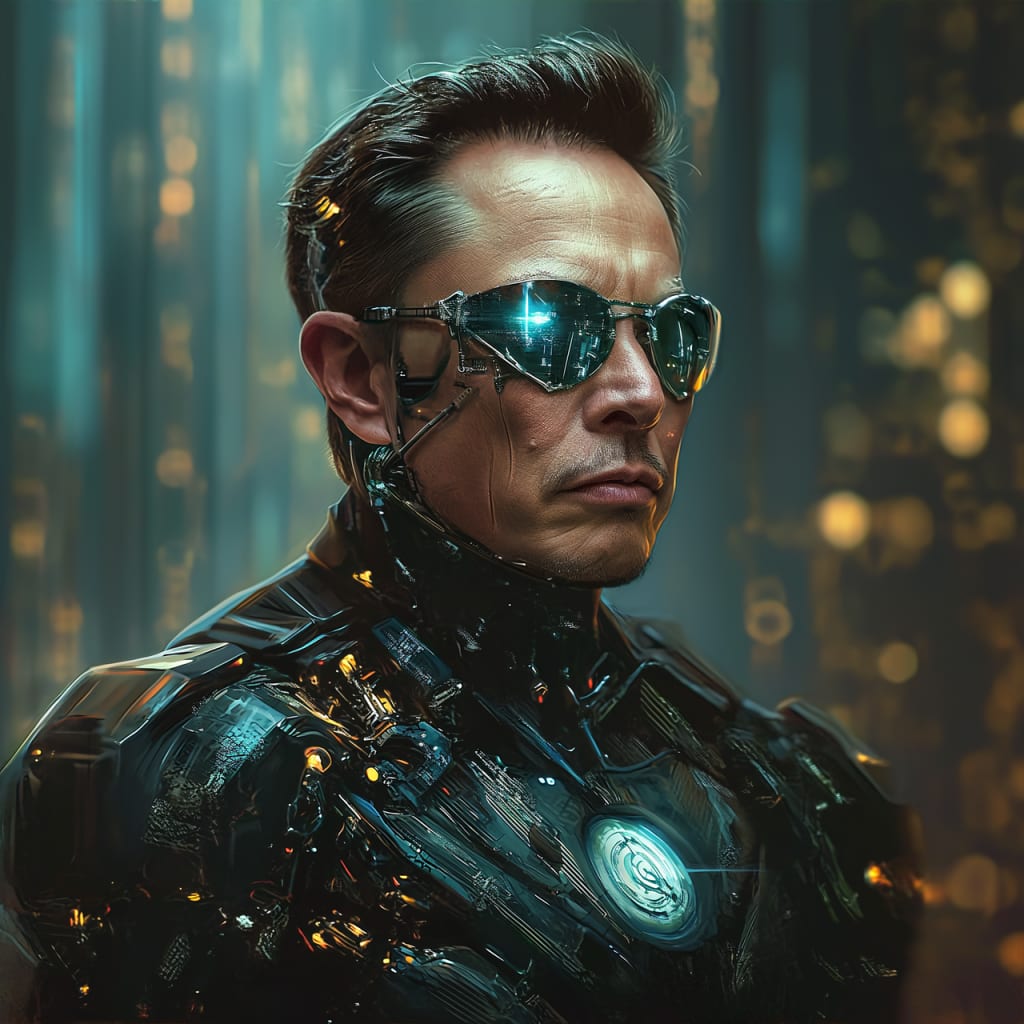Decoding Elon Musk's Ambitious Neuralink
Brain Chips, Surgical Robots and the Quest for Superhuman Potential

Introduction
In a world where technology is rapidly advancing, blurring the lines between science fiction and reality, Elon Musk's Neuralink stands at the forefront of an audacious endeavor – to merge human intelligence with artificial intelligence (AI). This ambitious startup, founded by the visionary entrepreneur in 2016, is on a mission to develop a brain-computer interface (BCI) that could potentially bestow superhuman capabilities upon its users.
The Driving Force Behind Neuralink
Musk's motivation for establishing Neuralink stems from his belief that humanity must keep pace with the rapid advancements in AI to avoid being rendered obsolete. By creating a seamless symbiosis between the human brain and digital intelligence, Neuralink aims to unlock a realm of possibilities that could not only enhance our cognitive abilities but also mitigate the potential risks posed by an unchecked AI revolution.
Neuralink's Groundbreaking Technology
At the heart of Neuralink's innovation lies the "Link" – a remarkable device that represents a significant leap forward in BCI technology. This coin-sized implant, designed to be embedded within the skull, is equipped with an array of flexible, hair-thin threads coated with a conductive polymer. Each thread is studded with electrodes capable of monitoring the electrical activity of neurons, effectively translating brain signals into digital commands.
Surgical Precision and Minimally Invasive Implantation
To ensure the safe and accurate implantation of the Link, Neuralink has developed a cutting-edge surgical robot. Akin to a high-tech sewing machine, this robotic system employs a sharp, tungsten-rhenium alloy needle to meticulously position the threadlike electrodes within the brain's folds, avoiding blood vessels and vital structures. The robot's advanced imaging capabilities enable it to navigate the intricate terrain of the brain with unprecedented precision.
Wireless Data Transmission and Seamless Integration
One of the key innovations of the Link is its ability to wirelessly transmit data at high speeds, eliminating the need for cumbersome wires and external processing units. The device's embedded computer chips handle the processing and filtering of neural signals, streamlining the communication between the brain and external devices. Additionally, the Link's battery can be recharged wirelessly, further enhancing its seamless integration with the user's daily life.
Paving the Way for Medical Breakthroughs
While Neuralink's ultimate goal is to augment human capabilities, the company recognizes the immense potential of its technology in the medical field. By restoring functionality to individuals with spinal cord injuries, Parkinson's disease, multiple sclerosis, and other neurological conditions, the Link could significantly improve the quality of life for countless patients.
Overcoming Biological Challenges
Despite the remarkable engineering feats achieved by Neuralink, the company faces formidable biological challenges. The brain's inherent hostility towards foreign objects, its constant motion, and the risk of inflammation and scarring pose significant obstacles to the long-term viability of brain implants. Neuralink's innovative approach, utilizing flexible, polymer-coated threads, aims to mitigate these issues and ensure a seamless integration between technology and biology.
The Ethical Implications of Brain-Computer Interfaces
As with any groundbreaking technology, Neuralink's pursuits raise important ethical considerations. Questions surrounding privacy, data security, and the potential for misuse or unintended consequences loom large. Experts caution that while the potential benefits are vast, safeguards must be implemented to protect the sanctity of the human mind and prevent the exploitation of this powerful technology.
Accelerating Progress and Fostering Innovation
Musk's involvement in Neuralink has undoubtedly accelerated progress in the field of brain-computer interfaces. His unwavering enthusiasm and ambitious vision have attracted significant investment and sparked a wave of innovation among competing startups. However, some scientists express concern that overhyped promises could lead to disillusionment and potentially hinder long-term advancements if expectations are not met.
The Road Ahead: Challenges and Opportunities
As Neuralink prepares for its second human trial, the company faces a multitude of challenges. Obtaining regulatory approvals, ensuring the safety and efficacy of the implants, and overcoming the complexities of the human brain are just a few of the hurdles that lie ahead. Nonetheless, the potential rewards are equally profound – the possibility of restoring lost abilities, enhancing cognitive function, and unlocking new frontiers of human potential.
Neuralink's Impact on the Brain-Computer Interface Industry
Musk's involvement in Neuralink has sparked a renaissance in the brain-computer interface industry, igniting investor interest and fostering a new generation of startups. Companies like Blackrock Neurotech, Synchron, Precision Neuroscience, and BrainCo are now at the forefront of this burgeoning field, each pursuing innovative approaches to bridging the gap between the human brain and digital technology.
The Pursuit of Superhuman Capabilities
While the medical applications of Neuralink's technology are undoubtedly significant, Musk's ultimate vision extends far beyond therapeutic purposes. He envisions a future where the seamless integration of human and artificial intelligence could bestow users with superhuman capabilities, ranging from enhanced cognitive abilities to direct control over external devices through mere thoughts.
Conclusion: A Glimpse into the Future
As Neuralink continues to push the boundaries of what was once deemed science fiction, the world watches with a mixture of awe and trepidation. The prospect of merging human intelligence with artificial intelligence is both exhilarating and daunting, promising a future where the limitations of the human mind could be transcended. Whether Neuralink succeeds in realizing Musk's ambitious vision remains to be seen, but one thing is certain – the journey towards unlocking the full potential of the human brain has only just begun.
About the Creator
Kevin MacELwee
"Hello, my name is Kevin, a former electrician and construction worker now exploring online entrepreneurship. I'm passionate about animal welfare and inspired by 'Rich Dad Poor Dad' by Robert Kiyosaki. I also have a YouTube channel as well.
Enjoyed the story? Support the Creator.
Subscribe for free to receive all their stories in your feed. You could also pledge your support or give them a one-off tip, letting them know you appreciate their work.






Comments (1)
Great man in deed. Kindly share your social handles